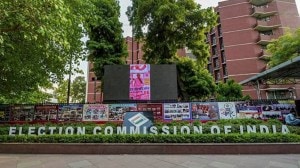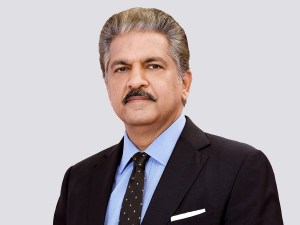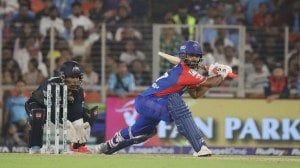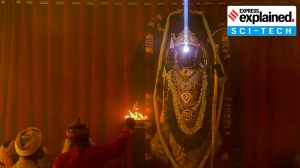- India
- International
Bihar elections: His base shrinking, Nitish hopes voter cheering Modi will carry him along
For the first time in 15 years in Bihar, Nitish is at the receiving end of, not in the driving seat of, the desire for change.
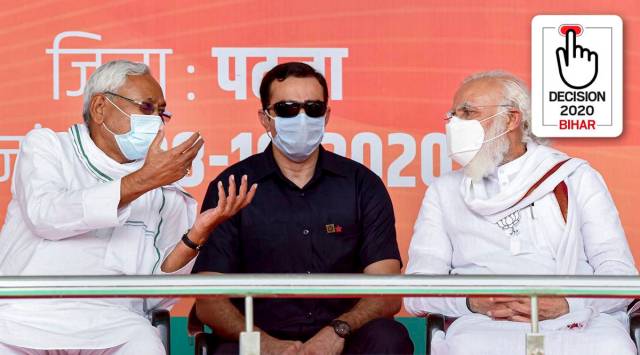 Prime Minister Narendra Modi and Bihar Chief Minister Nitish Kumar during an election rally, at the veterinary ground in Patna. (PTI)
Prime Minister Narendra Modi and Bihar Chief Minister Nitish Kumar during an election rally, at the veterinary ground in Patna. (PTI)Anti-incumbency does not quite describe it. This election is dealing two cruel ironies to Nitish Kumar. One, for the first time in 15 years in Bihar, he is at the receiving end of, not in the driving seat of, the desire for change.
It’s a deep and dramatic shift: A leader seen and celebrated as the hero of Bihar’s Great Turnaround Story, is now seen as a figure of Old Guard, the obstacle for repair and progress, not the righteous vehicle for it.
After all, it was Nitish who restored the authority of the State after the slide presided over by Lalu Prasad, who had scripted a radical upending of caste inequalities but did not, or could not, take the next step: stitch the politics of social justice with an agenda of governance.
Nitish was the Mandal leader adept at social engineering who also became Sushasan Babu. His government took steps to empower the extremely backward castes, Mahadalits and women, while transforming the Bihar landscape with interventions in law and order, building roads and bridges, providing electricity and cycles for schoolgirls.
The second irony is more savage: Even as Nitish voters show signs of division and alienation, the section that seems to be holding fast for him is made of mostly upper caste voters who pledge loyalty more vehemently to Narendra Modi — Nitish’s erstwhile bitter opponent and now awkward ally.

Read | In BJP bastion Bhagalpur, a contender: ‘unguided missile’ LJP
While the BJP and JD(U) have gone into this election as the NDA coalition, and even though Nitish is its declared CM candidate, many degrees of separation lie between the two men. There is no Nitish on the Modi poster, and no Modi rebuke for Chirag Paswan who pledges loyalty to Modi as he puts up candidates against Nitish. Stories abound of the BJP cadre taking the cue on the ground, joining the LJP campaign and maintaining its distance from the JD(U).
 Indian Prime Minster Narendra Modi, right, greets Bihar Chief Minister Nitish Kumar, left during a campaign ahead of Bihar state Assembly elections in Patna. (AP Photo/Aftab Alam Siddiqui)
Indian Prime Minster Narendra Modi, right, greets Bihar Chief Minister Nitish Kumar, left during a campaign ahead of Bihar state Assembly elections in Patna. (AP Photo/Aftab Alam Siddiqui)
For the Chief Minister who kept Modi out of the Bihar campaign and famously cancelled a dinner for the BJP ahead of the 2010 election because hoardings in Patna featured the then Gujarat CM Modi’s largesse for the Kosi flood-affected, for the leader who raised the secularism flag and walked out of the NDA in 2013 because Modi was being projected as its PM candidate, dependence on the steadfast Modi voter to help him through to a fourth term must surely be a bitter pill.
However, Modi may be coming to Nitish’s aid only in limited ways — mostly among the upper castes, who are still haunted by vivid spectres of what they label as Lalu’s “jungle raj”.
Among the backward castes and Dalits — where, too, passion for Modi seems undimmed — Nitish must contend with an increasing clamour for a “badlav” or “parivartan” that he is seen to be on the wrong side of.
Explained | Nitish govt’s triple C motto, and why there’s no mention of it in the Bihar polls
In the most immediate sense, it has to do with something that befell him, something he is seen as not having coped well with — the pandemic that sharpened economic distress. The urgent throb in this election of the question of rozgar, or jobs, is an outcome.
In a larger sense, however, Nitish is now seen as unable to engage and address aspirations that he himself has played such a great role in laying the ground for.
In the Ravidas (SC) tola of village Sarai Matiara, district Vaishali, Manju Devi starts the conversation: “Nitish gave us electricity… school uniforms for our children. We are also getting the free atta-dal-chawal in the pandemic. We are surviving because of Nitish”. Immediately, agitatedly, Kishan Ram, who says he has voted for Nitish in the last three elections, counters her by telling a story that, in this state of migrants, is not his alone.
“I work as a rickshaw puller in Delhi, had to walk back home when the lockdown began. Now I have no work, no money to go back to the city. The only thing I haven’t yet been driven to do is to beg.”
So what if the government gives free rice and wheat, he asks. “We got that even in the time of Indira Gandhi. And is 5 kg a person for a month enough? We are Dalits. We don’t have anything, no land, no money, to fall back on”. Things could get better if the government changes, “sarkar paltega toh…”.
In the neighbouring cluster of fruitsellers, Mohammad Allauddin’s sons have also had to come back, leaving jobs in Chhattisgarh. “We cannot go out to make a living, our melas and festivals have also been shut down, while their political rallies are open and free. Is the virus only for us?” Many point to the unfairness of a lockdown that allows election congregations, but clamps down on all work and religious gatherings.
The migrant’s return in the pandemic also appears to have stoked a deeper questioning in Bihar, of which Nitish bears the brunt.
In Phulwaria village of Mahua Vidhan Sabha constituency, young Dilip Paswan asks: “What is this vikas (development) if we need to go out of our state, to Delhi and Haryana and Maharashtra, to make a living? If we had jobs here, why would we need to go out? What use is this double-engine sarkar (JD-U in state, BJP at Centre), if we must leave our home?”
Change is needed, says Abhishek Dhawan, in village Rattanpur of district Muzaffarpur, because Bihar is falling behind in the “raftar” or speed of development. Abhishek is a Dalit student who is a beneficiary of the student’s credit card scheme which is part of Nitish government’s ‘Saat Nishchay’ or seven-resolves programme. He articulates another recurring voter unease in this election: “The nal jal yojana (also a part of Saat Nishchay) is being implemented without consideration of local needs or due diligence on the quality or mineral content of water. The money spent unthinkingly in schemes could have been more productively invested in education, or to create jobs”.
If among the backward castes and Scheduled Castes, a discontent born of an incomplete or inadequate empowerment is making itself heard, on the other side of the caste divide, Nitish finds himself damned by faint praise.
“Nitish is better, not best” says Trilok Ranjan, in the Rajput cluster in village Matiara, district Vaishali. “But we have no option. We cannot vote for Lalu’s son, or his indisciplined party.”
Fear of “Lalu raj” also softens and tempers assessments of Nitish rule on the campus of Babasaheb Bhimrao Ambedkar Bihar University in Muzaffarpur, as a group of professors discuss the election.
They berate Nitish for “policies to win cheap popularity”, a euphemism for the perceived tilt towards backward castes. But “how can Tejashwi be the alternative? You cannot compare the two”, says Sri Prakash Pandey. It is all very well to talk of change, says Sunil Kumar Mishra, but “parivartan needs ashwasan (trust and reassurance)”. “The old phuhadpan (coarseness) is back in the political discourse, you can see it”, says Manoj Kumar.
Apr 18: Latest News
- 01
- 02
- 03
- 04
- 05
















